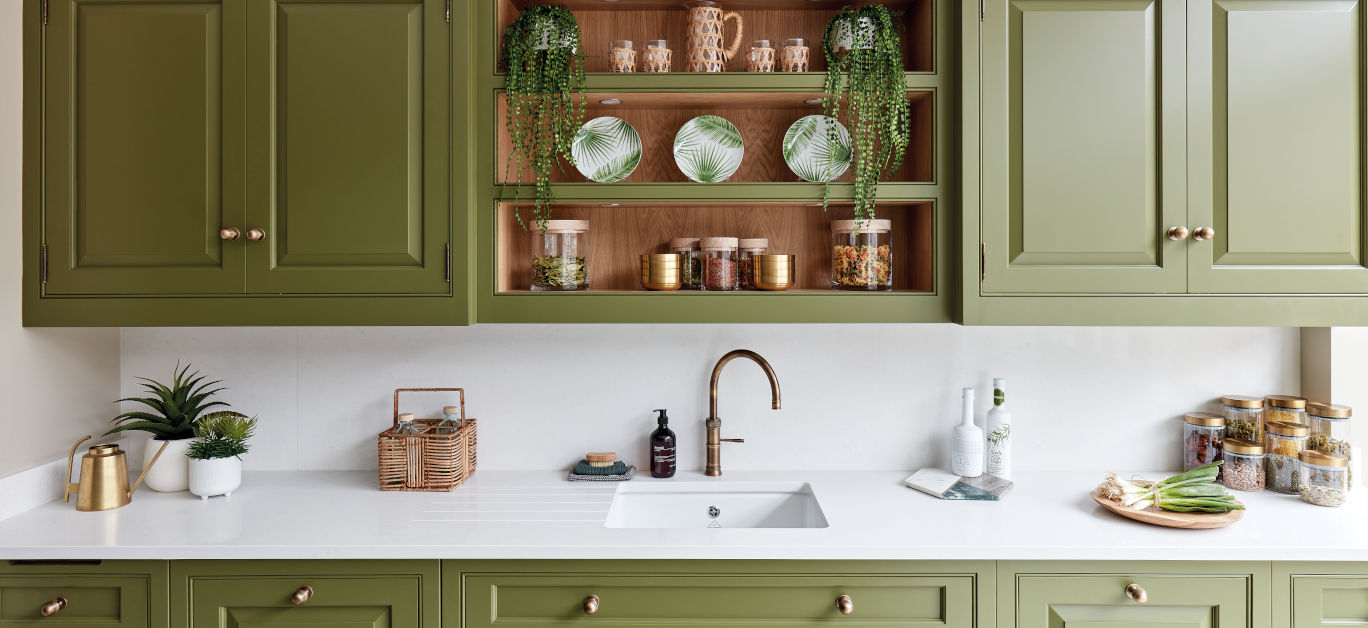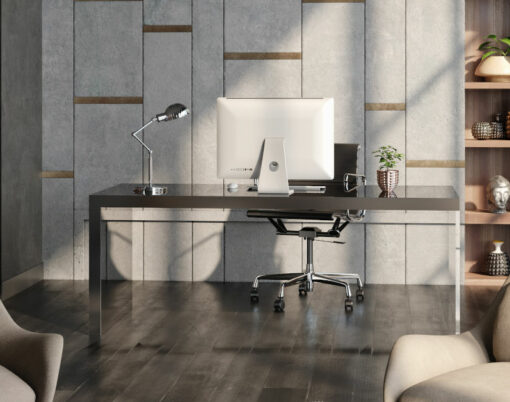A slab splashback is a striking kitchen feature where the surface continues at a 90-degree angle, flowing up a wall and creating a seamless look. This elegant focal point links your walls, worktops, and cabinets – perfect for lovers of clean lines.
From the global leader in premium surfaces, Caesarstone, and the luxury bespoke kitchen maker, Tom Howley, here are some slab splashback tips and ideas that might just have you ditching dated tiles for a sleek cascading option that’s as durable as it is beautiful.
Create a seamless flow
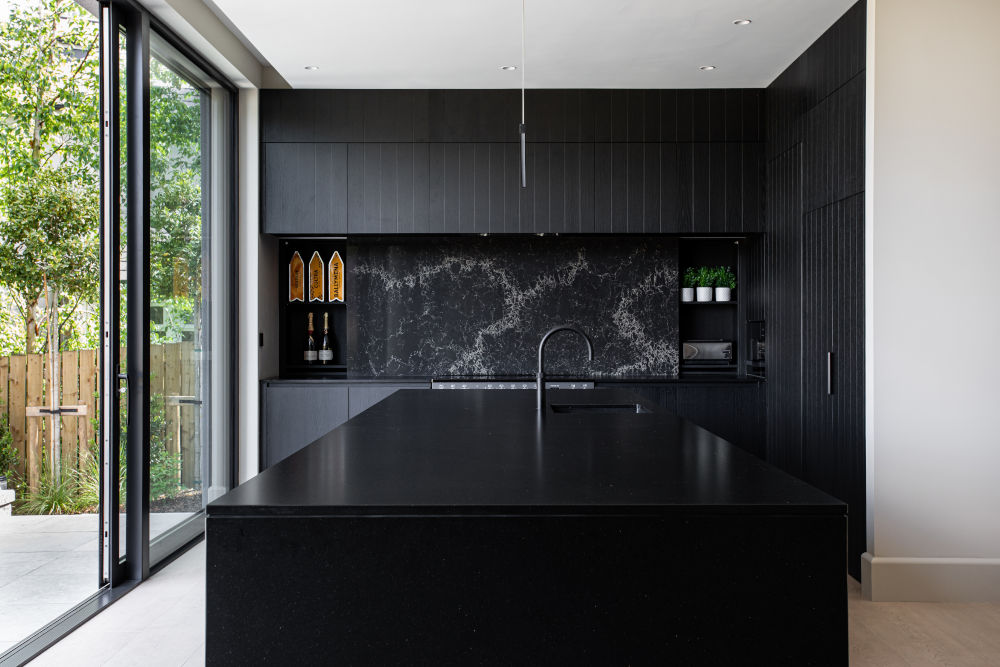
Jonathan Stanley, VP of marketing at Caesarstone, begins: “The right surface offers a sense of elegance, even in a busy family household. Consider opting for a slab splashback to match your worktops, creating a seamless flow that pleases the eye but is also incredibly practical. This is a rising trend we’ve noticed lately. A slab splashback creates the stunning visual of a single surface that continues from your worktop up onto the wall. Heat and stain resistant, a quartz or porcelain splashback makes clean-up easy after your hob-cooked family dinner has splashed behind the hob.”
Let the design shine
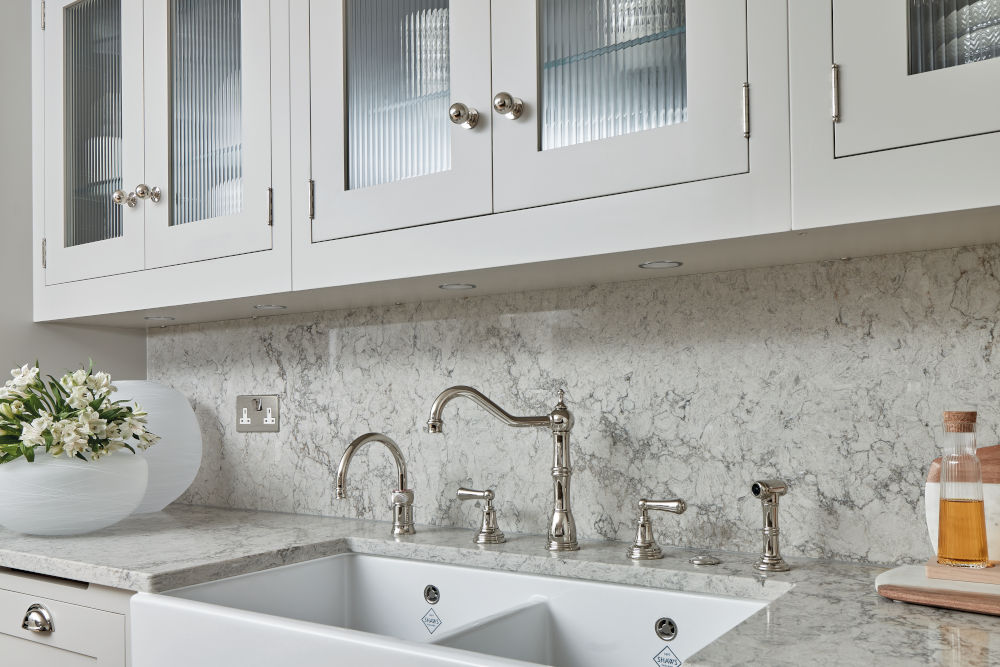
Jack Winfield, sales designer at Tom Howley Solihull, says: “A slab splashback is a real showstopper in a kitchen. With a classic worktop, the stone’s design is really only seen from above. By showcasing it on the wall, centred in a chimney or running up to the underside of wall cabinets, you allow the beautiful design to shine. This works particularly well with heavily veined, marble-look surfaces – think Caesarstone’s White Attica or Calacatta Nuvo. This is especially beautiful in the evening with moody wall lighting that highlights the design.”
Prioritise practicality
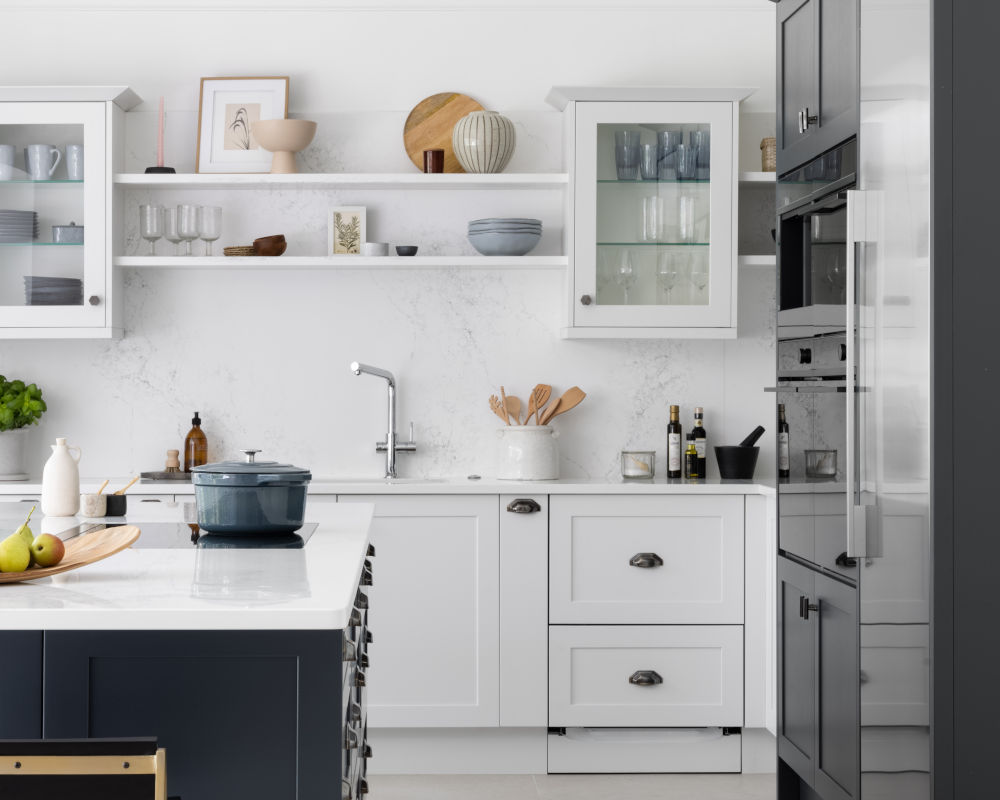
Stanley explains: “Carefully consider your material choice and its practicality. A splashback needs to be durable and resistant to stains, as it often encounters cooking splatters and spills. Heat resistance is also crucial, especially when located near hobs or ovens. Low maintenance is another key requirement, necessitating materials that are easy to clean and keep hygienic. For these reasons, natural stone, such as marble and quartzite, is not recommended for kitchen splashbacks. These materials are highly susceptible to staining and damage, especially in such a key area as the splashback. To avoid substantial staining, you would have to seal your splashback at least annually.
“Quartz surfaces, on the other hand, are man-made from natural, raw materials bound with resin, which results in a very durable, non-porous splashback and countertop material. Caesarstone quartz does not require sealing and, due to its low porosity, is highly stain-resistant. It is also incredibly simple to clean – warm water and a splash of mild detergent are all that’s needed.”
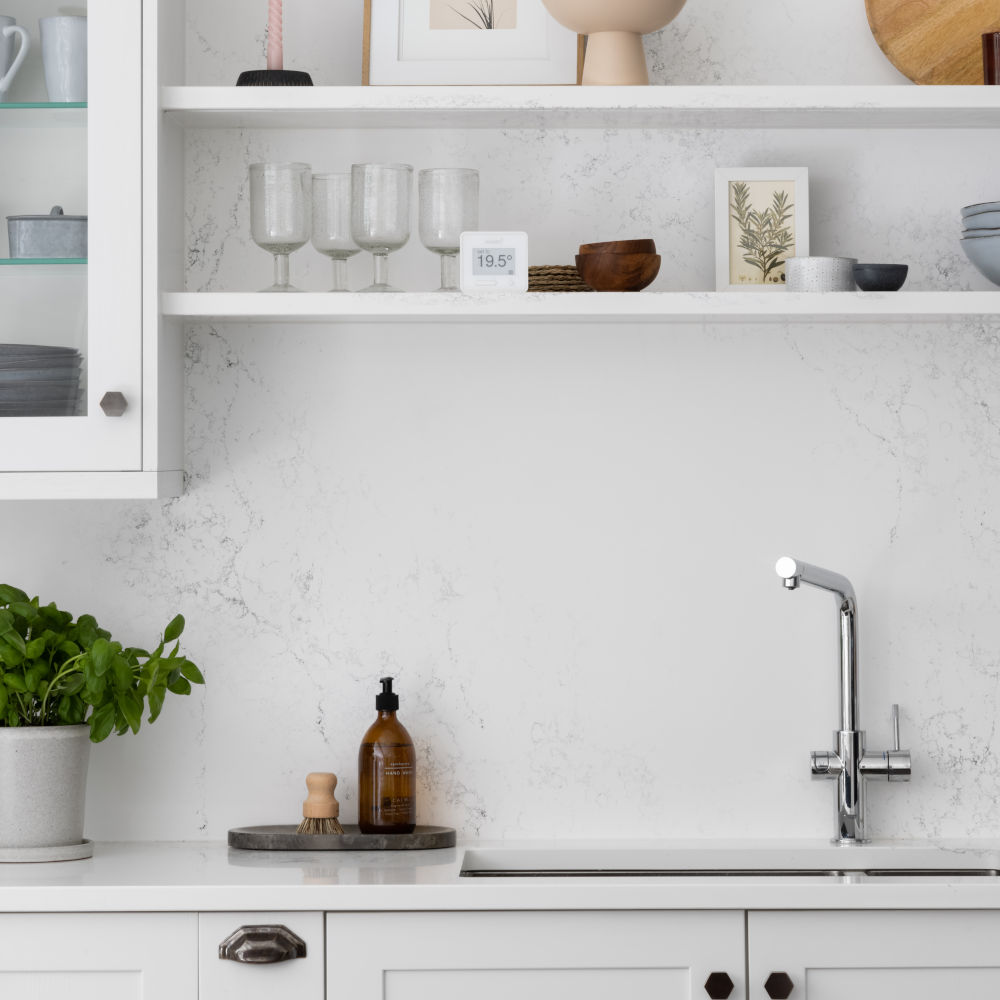
Winfield adds: “Aside from aesthetic beauty, one of the advantages of a slab splashback is practicality. A single piece of material with minimal joints is much easier to clean when compared with traditional tiled splashbacks. If maintained well, there should be minimal upkeep compared to alternatives. Grout can easily become dirty and start to look tired very quickly. In a busy household, functionality is key and a slab with a beautiful design may help mask some of the everyday spillages. Another popular option is mirrored splashbacks – but be prepared for this to show up most splashes and spills.”












